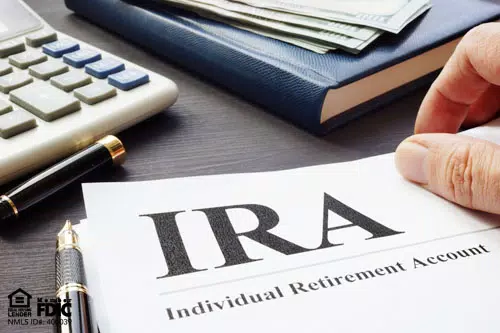Individual Retirement Accounts (IRAs) are an excellent way to store long-term savings for retirement. Unlike savings accounts, these are investment vehicles that, more often than not, offer higher returns and tax advantages. There are several different types of IRA accounts that you can choose from. Learn more about each type to determine which one may be right for you.
Traditional IRAs
Your before-tax money is contributed to a traditional IRA, allowing it to grow without paying taxes while in the account. You can add to this type of IRA regardless of your income level. However, your annual income could limit the deduction from your taxes. You can review the latest traditional IRA income limits on the IRS website for more information.
Traditional IRAs could be the right choice if you want a tax break today versus in retirement. It also makes sense if you are expecting your tax rate to be lower when you retire. If you withdraw before reaching 50 and a half years of age or other requirements, you will pay a 10% penalty.
Roth IRAs
Traditional and Roth IRAs are the most popular types of IRAs that people choose. Roth IRAs are the opposite of traditional in that your contributions are after-tax. That means you can withdraw your investment earnings upon retirement without being taxed on the money. It also means that you won't be able to leverage it for a tax break in the present. Money can be withdrawn under certain circumstances without a penalty. Income limits on Roth IRAs cap the amount high earners can contribute annually.
Self-Directed IRAs
This type of IRA allows you to invest in alternative investment funds, including real estate. You need a custodian to allow you to make these alternative investments to accomplish this. Generally, brokers don't offer this type of IRA account. Custodians who work with self-directed IRAs are typically specialized. You may find custodians with some banks. These accounts tend to be far more complex, so it’s best to talk with someone with experience managing these funds, such as a financial advisor.
Backdoor Roth IRA
If the income limits have ruled out your contributions to a Roth IRA, a backdoor Roth IRA could be an alternative. It works by opening a traditional IRA and then converting it to a Roth IRA. Remember that you've taken a tax deduction for the traditional IRA and are now moving to a Roth. You’ll pay income tax on that converted money. If quite a bit of time passes between the account conversion, you may also owe taxes on the gains. The IRS pro-rata rule applies in this scenario. This means the IRS will look at your combined traditional IRA accounts to determine the taxable amount upon conversion.
SEP IRA
Simplified employee pension accounts are suitable for those who are self-employed or small business owners. Similar to a traditional IRA, your contributions are tax-deductible and grow tax-deferred. In retirement, your withdrawals are taxed at the regular tax rates. If there are employees who are eligible for this type of account, you are required to make the same contribution to their account as you do to yours. Generally, employees aren't able to make contributions to their SEP IRA if they have one. Business owners can contribute up to 25 percent of their compensation if it's not more than $56,000 in a year.
Spousal IRA
These accounts are the only type that lets spouses without income contribute to their own traditional or Roth IRA. Although the non-working spouse owns the account, the contribution amount is based on the working spouse's income. A non-working spouse's maximum contribution is $6,000, or $7,000 if they are 50 or older. The other stipulation is that contributions for both spouses into their IRAs can't exceed the working spouse's earned income.
SIMPLE IRA
Small companies with 100 or fewer employees can offer their employees a SIMPLE IRA. Savings Incentive Match Plan for Employees requires employers to contribute based on rules specified by the IRS. Employees can contribute up to these accounts by up to $13,000 a year. For employees 50 and older, the amount goes up to $16,000. Contributions by employees will reduce their taxable income and grow tax-deferred. Once withdrawals occur on a SIMPLE IRA, income taxes will apply. Vesting starts immediately, so employees keep all employer contributions.
Inherited IRA
Also known as beneficiary IRAs, these accounts can be left to multiple people, a trust, an estate, or one individual after the original owner's death. The IRS rules will determine what you'll owe in taxes and if you will be required to take minimum distribution amounts. Generally, these determinations are based on your relationship to the deceased and the type of account (Roth or Traditional) you've inherited. Following the specific tax rules is essential to avoid paying a huge tax bill.
If you are ready to open an IRA account, let our experts at NASB help you. Give us a call at 855-338-0915.



